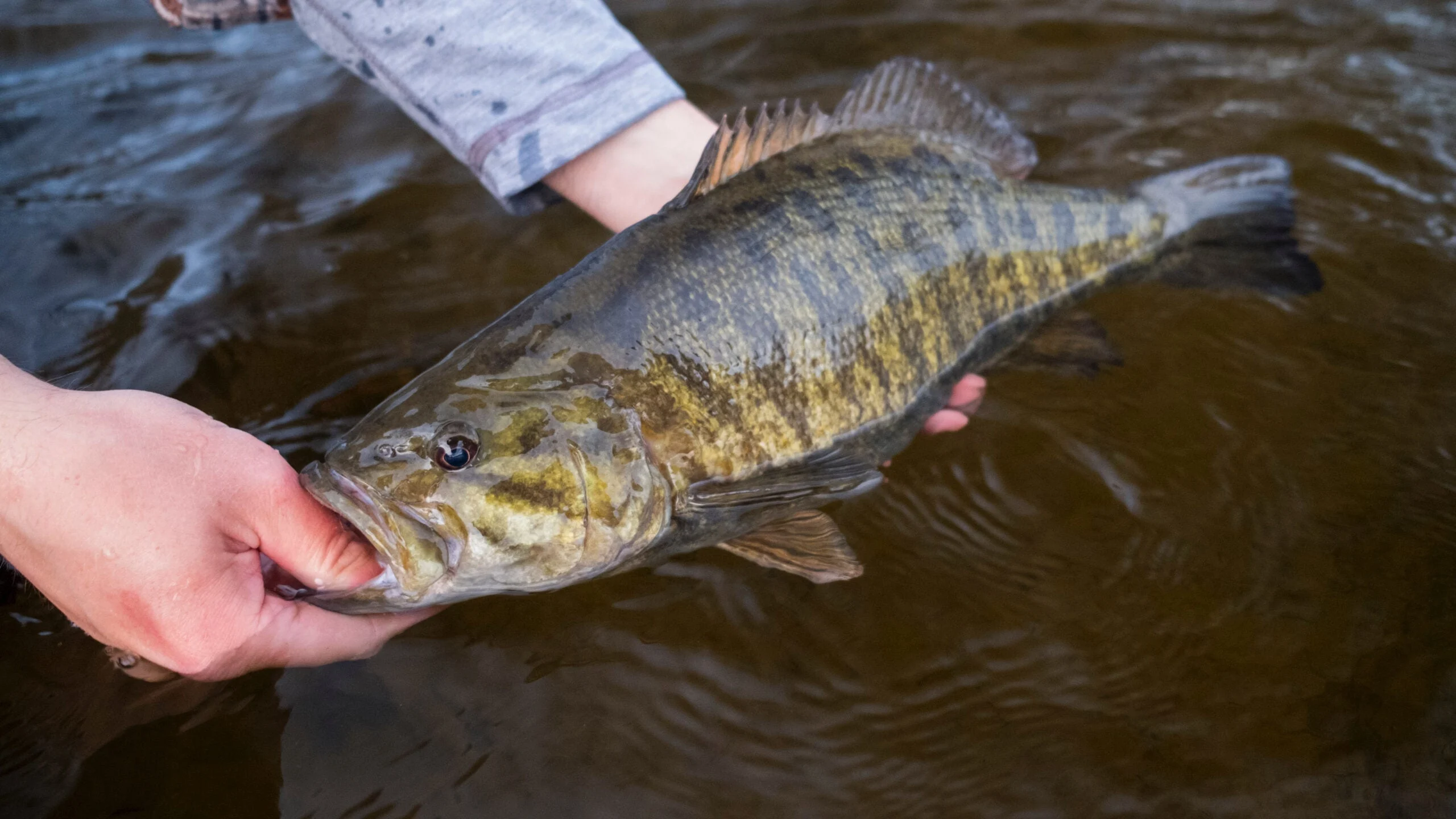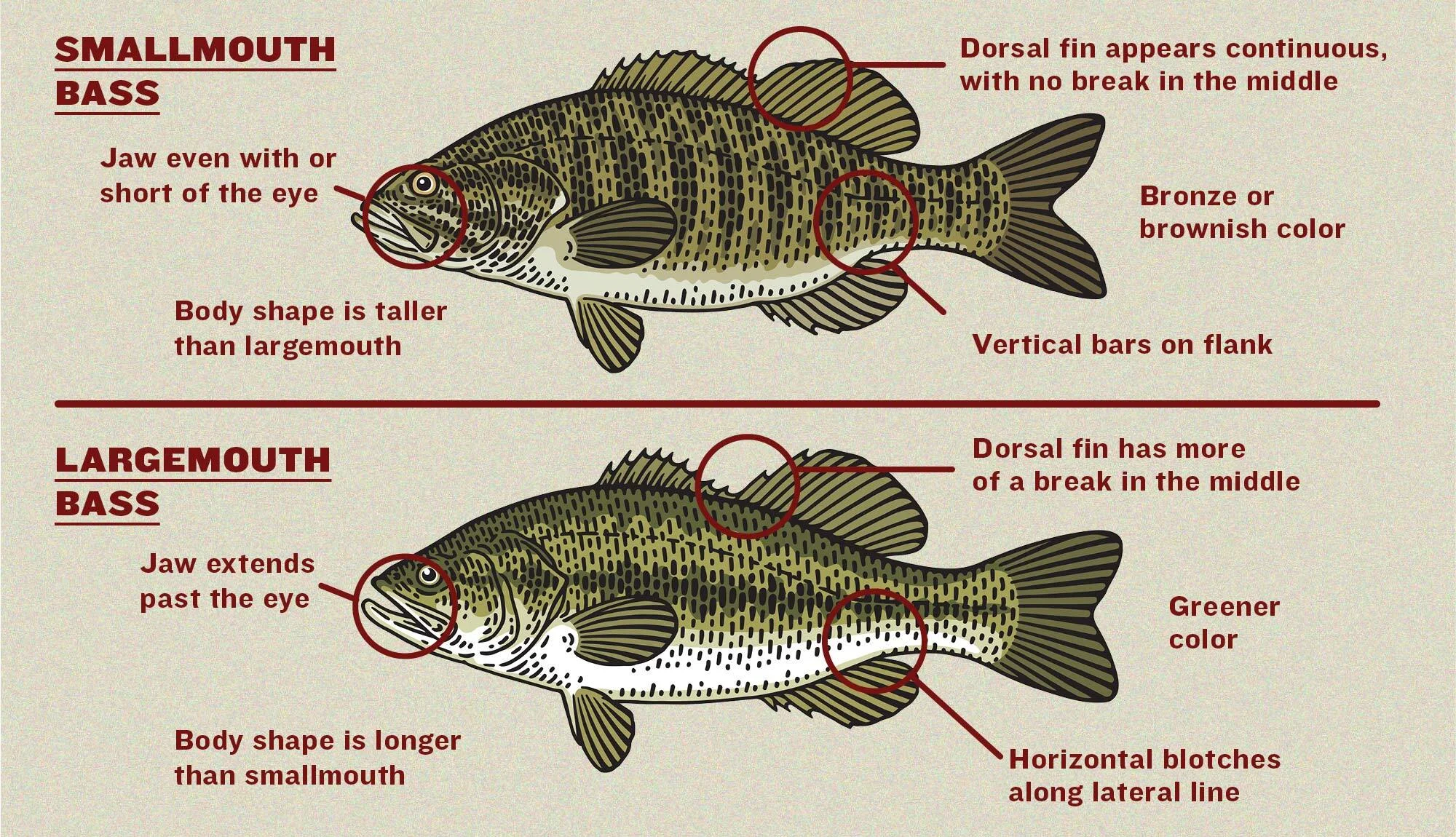No species is more closely associated with freshwater fishing than bass. It’s what most people—anglers and nonanglers alike—envision catching when casting into a lake or pond. And it makes sense because largemouth and smallmouth bass are some of the most easily and widely accessible fish in the country. Both species of black bass are found nationwide in lakes, ponds, canals, rivers, reservoirs, and other bodies of water.
Fishing styles vary based on location, time of year, forage, and experience. That’s what makes bass fishing so appealing to a wide range of people: everyone can do it. From kids catching bass at a local pond with a worm to professional anglers competing for millions of dollars in tournaments—bass offer something for every type of angler.
But no matter where you land on that scale, starting with the basics is important. That means understanding bass habitat, food sources, behavior, and the spawning process. Then, you can tailor your gear, baits, and equipment to your fishing style. We put together this beginner’s guide to bass fishing so you know exactly where to start, what gear to buy, and how to catch big bucketmouths and bronzebacks.

Species
There are nine officially recognized species of black bass, but for this story, we are focusing on the two most common in the country: largemouth and smallmouth. Largemouths can be easily identified by their big mouths (pun intended), greenish color, and horizontal blotches along the lateral line. Their jaw extends beyond the eye and largemouth are usually larger in length and weight.
As you may have guessed, smallmouths have small mouths which don’t go past their eyes. They feature a dark brown or bronze color (hence the nickname bronzebacks) and vertical bars across their sides (see below). They are generally taller than largemouths and have a continuous dorsal fin, whereas the largemouth dorsal fin looks broken into two parts.
In general, smallmouth prefer colder water than largemouth, which is why the Northeast and Northern Midwest have some of the best smallmouth fisheries in the country. Bronzebacks also thrive in clear, cold rivers and streams. Largemouth, on the other hand, can survive in extremely warm and shallow areas. Warmer water offers better growing conditions, which is one reason the South produces such big bucketmouths.

Bass Habitat and Forage
Bass can survive in a wide range of water temperatures, water depths, and water compositions. They can be caught in brackish water (where fresh and saltwater combine), muddy water, or ultra-clear water. Since they are cold-blooded, their metabolisms and other bodily functions can adjust to survive in near-freezing water temperatures up to water above the 100-degree mark. These fish, especially largemouth, are highly adaptable.
Though bass can and certainly do suspend and roam, they also like to stay close to cover to protect themselves from other predators and ambush passing prey. Bass can be found near submerged or emergent vegetation, woody cover, docks, rocks, and manmade structures like dams and bridges. Smallmouth and largemouth are opportunistic feeders, willing to settle for bugs and fry, but often eat fish and other animals as big, or bigger, as they are. Crayfish, shad, bluegill, perch, goby, and herring are among some of the more popular bass prey.
Accessibility
Bass are residents of all continental states and are even present in Hawaii. Smallmouth and largemouth prefer freshwater but can survive in brackish water, too. Ponds and creeks are great places for shore anglers to find bass. Pond hopping, a method of fishing multiple ponds throughout a day, has become extremely popular over the last decade. All that pond hopping requires is a couple of rods, a few different baits, and your legs. Being proficient with Google Maps will also help improve your success at finding new water to target.
Though lots of bass can be caught wading creeks and walking shorelines, you can really up your game with a kayak or jon boat. Being able to push away from shore and venture further out into the water gives you more opportunity to target a larger portion of the fish population. There are many kayaks designed specifically for fishing, from paddle options to pedal options to motor options. Old Town even offers a pedal-assist kayak that made waves in the fishing world last year.
Many serious and tournament bass anglers aspire to own a bass boat. High-end, fully-rigged bass boats will put a serious dent in your wallet. And though they certainly represent ultimate freedom on the water, there’s a whole other freedom available in a debt-free, older model bass boat. To be clear, you don’t need a fancy bass boat to catch fish on the water. You just need something that can get you to where the fish are and back safely.
Tournament Bass Fishing
For decades, having a bass boat or a buddy with one was a prerequisite for tournament bass fishing. However, there are all sorts of tournaments and other competitions in the bass fishing world. Traditional bass tournaments still require an angler (or two-man team) to bring five bass to the weigh-in after an allotted amount of time on the water (typically 8 hours). The winner in these events is determined by the overall weight of the five-fish limit. The Bassmaster Classic is the most popular and highly regarded bass tournament in the world. It is the Super Bowl of bass fishing. MLF (Major League Fishing) is another popular and highly competitive bass fishing league, featuring some of the best anglers in the world.
However, there are also catch-photo-release (CPR) events, where kayak anglers, particularly, catch a bass, take a photo of its length using a specific measuring device, and immediately release the fish back into the water. The winner is then determined by the combined overall length of their best five fish. Kayak anglers looking to compete in tournaments should look into the KBF (Kayak Bass Fishing) to see what events are in their area.

Bass Fishing Rods and Reels
The most essential piece of equipment you’ll need to catch a bass is a rod and reel. Closed (spincast) reels like Zebcos are the best options for people who are just getting into fishing. Spinning reels offer more capabilities and are typically an easy transition for anglers who are looking to advance to the next step of gear beyond a spincast.
Then there are the baitcasters. These reels offer many options regarding line sizes, techniques, and strength for battling big fish, but they can be difficult to cast for beginners. Once you’ve mastered spinning reels and need something a little stronger, it’s time to upgrade to a versatile baitcasting rod and reel. You can even use this guide to learn how to cast a baitcaster.
If you’re brand new to bass fishing, there’s no shame in starting with a Zebco. When you are ready to move on, a medium-heavy spinning rod and reel in the 6-foot, 9-inch range will be a great addition to your arsenal. And you can do a whole lot with a 7-foot medium-heavy baitcasting rod paired with a 7:1 gear ratio baitcasting reel. I’d recommend this rod and reel combination to anyone looking for their first baitcasting setup.

Tackle and Baits
The market is oversaturated with soft plastics, hardbaits, finesse rigs, moving baits, and more. Plus, there are dozens of popular techniques that appear to be essential and necessary to learn immediately. So, where do you start?
The first thing to do is develop confidence in a couple of baits early on, using only one or two techniques each time you go fishing. Once you get that down, you can start broadening your fishing style to include more techniques and baits. You should know a few classic bass fishing rigs, but here are a couple of other baits and rigs beginners should learn.
Spinnerbait: You can use a spinnerbait year-round in less than 8 feet of water and anytime there’s a little wind or the water is stained.
Texas Rig: A Texas-rigged soft plastic lure, like a lizard, is easy to rig and works in all water clarities, around all sorts of cover, and throughout the entire year. It works particularly well in less than 10 feet of water.
Lipless Crankbait: A lipless crankbait like a Rat-L-Trap is a great bait for a bass fishing beginner. It cast a long way and can cover a lot of water. But avoid throwing it near hard cover like stumps and laydowns, as it will hang up easily.
Ned Rig: A Ned rig is one of the easiest baits to fish and it certainly gets as many bites as any other, though this is a bait that works better fishing from a boat than it does from the bank.


